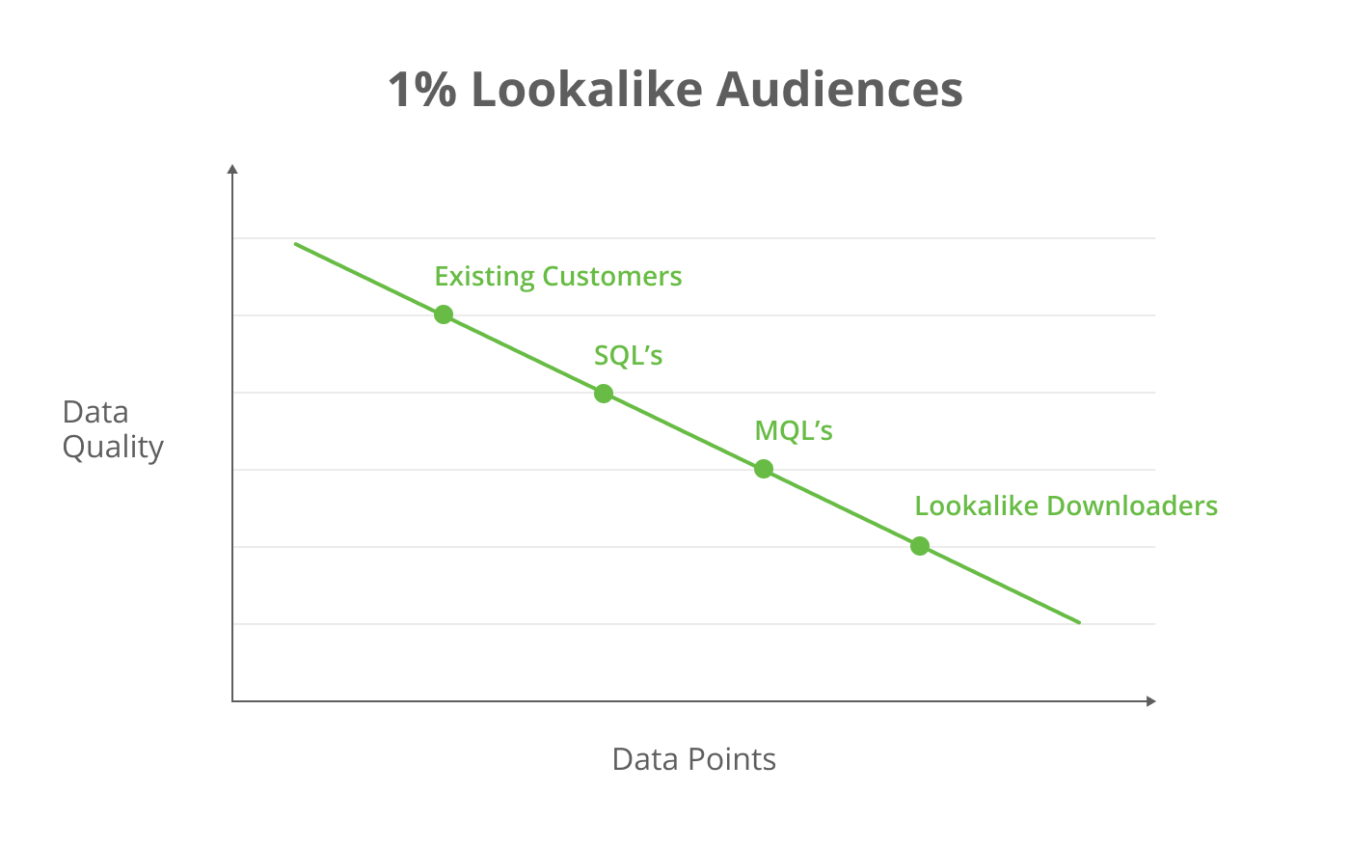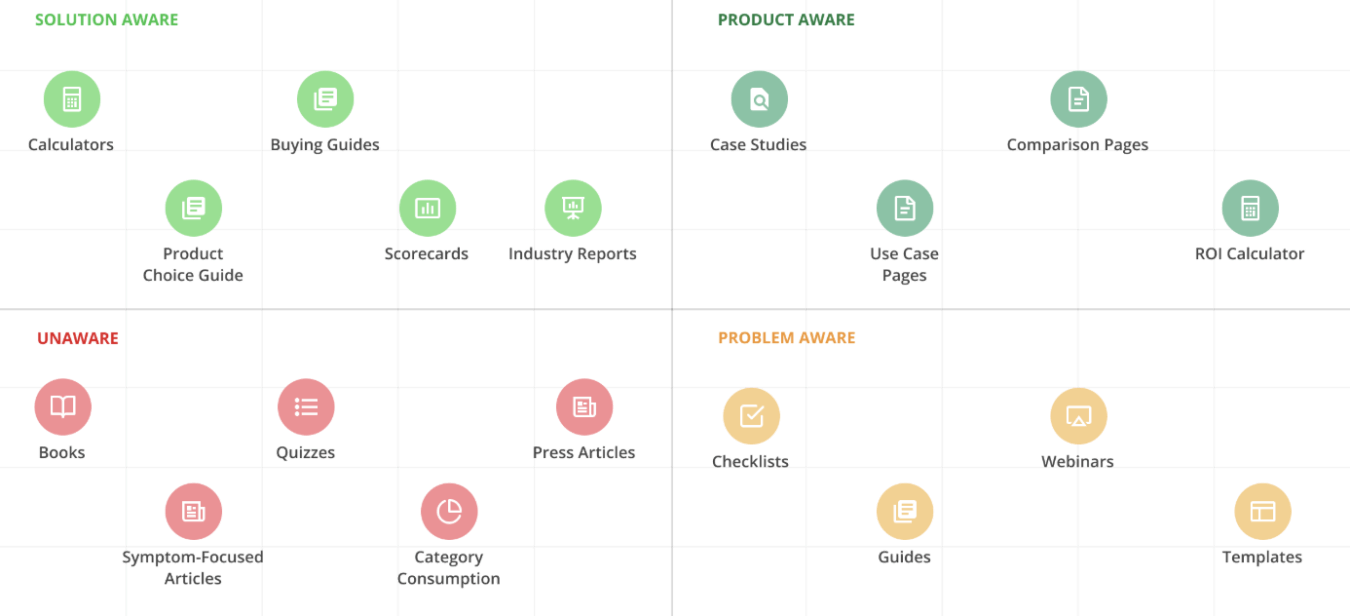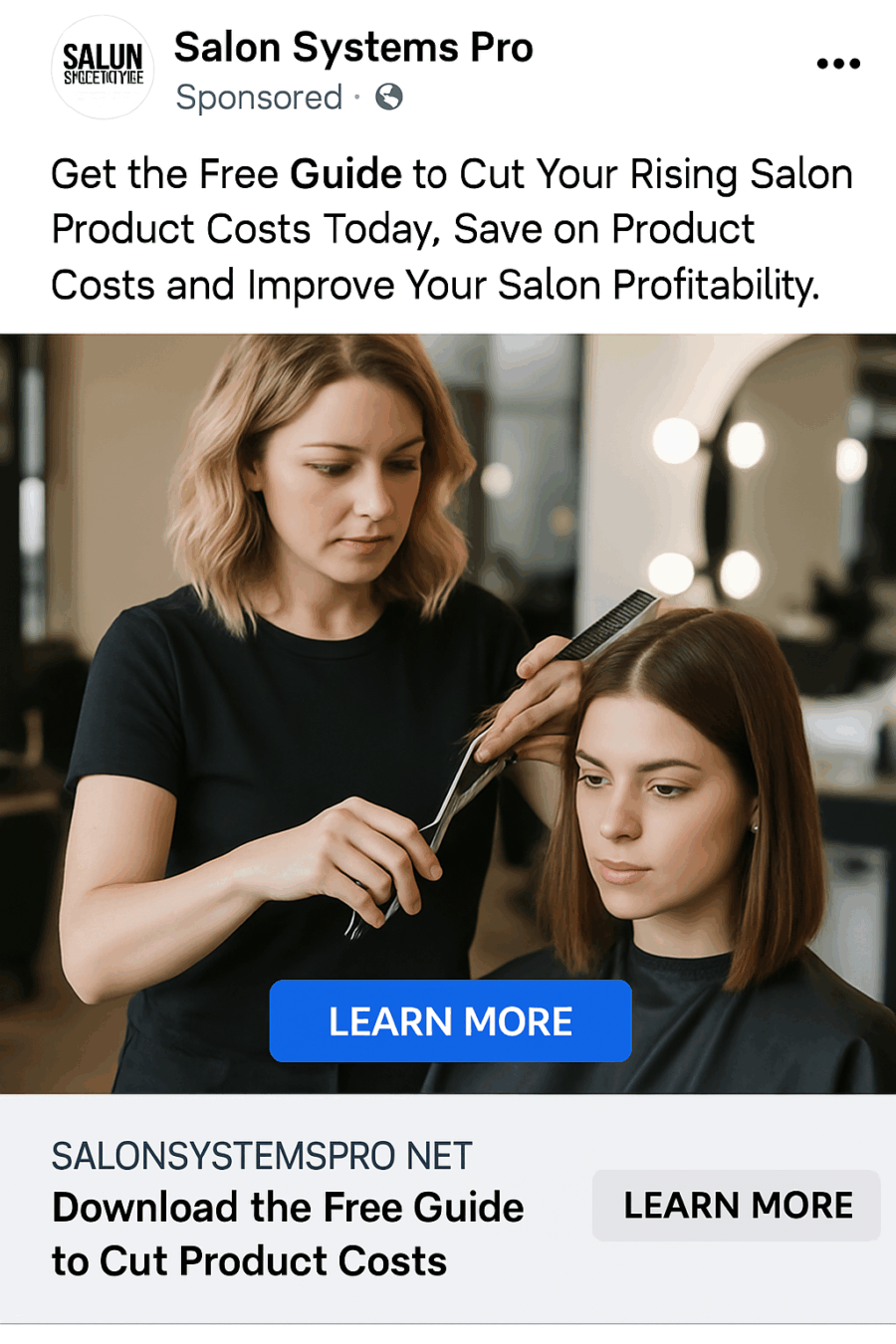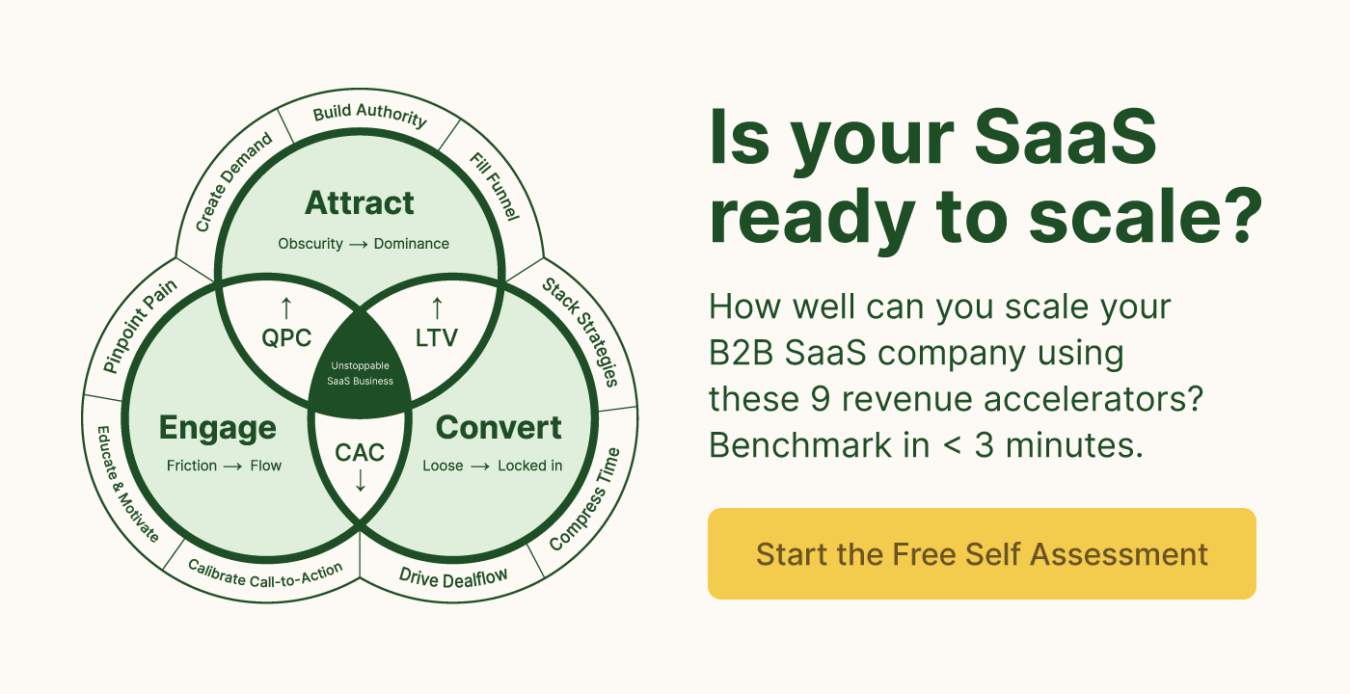Facebook Ads for B2B SaaS: Creating Advanced Audiences and the 80/20 of Messaging That Works
Last updated: June 13th, 2025
Most B2B SaaS companies dismiss Facebook ads, as the platform is primarily used for personal connections rather than product research or professional recommendations.
Yet this belief also means Facebook ads tend to be less competitive and, therefore, less costly than mainstream B2B platforms like LinkedIn and Google ads.
We’ve run dozens of Facebook ad campaigns and find that it’s an effective channel for most (if not all) of our B2B SaaS clients.
As long as your prospects are active on Facebook, it’s a viable channel to get your brand in front of the right prospects and increase touchpoints with your brand at a lower cost.
In this post, we’ll share our step-by-step process for running Facebook ads for B2B SaaS and provide case studies proving its effective platform for remarketing to prospects already in the funnel and targeting cold prospects.
When Should You Use Facebook Ads For B2B SaaS?
Here are three of the most common scenarios in which we believe it makes sense to incorporate Facebook ads into a paid media strategy.
1: Facebook Has The Largest Pool of Ideal Prospects
In some scenarios, we find that your ideal prospects are more active on Facebook than on a professional platform like LinkedIn.
For example, if your target audience is restaurant or salon owners, they may not be active on LinkedIn, making Facebook a much better platform.
2: Your Goal is to Retarget Current Prospects
Facebook is typically a cheaper platform than LinkedIn for retargeting, so it’s an excellent way to get more touchpoints from the same prospects at a lower cost.
So if we’re planning to run a retargeting campaign, we’ll typically add Facebook ads to the mix to improve content.
3: Your Goal is to Increase Brand Awareness
Facebook ads are generally cheaper than LinkedIn and, therefore, are excellent for increasing brand awareness.
However, be sure to use lookalike audiences when running a campaign rather than general targeting.
Why B2B SaaS Companies Often Fail With Facebook Ads
If you’ve tried Facebook ads and they did not work, these are the three most common mistakes we see B2B SaaS companies make.
Mistake 1: Imprecise Targeting
LinkedIn allows you to target decision makers by title and use other filters that make it easy to show your ads to the right person.
However, most of Facebook’s filters are for interests and behaviors, which is often too broad for B2B SaaS. While building custom audiences can work, it’s very tricky, and we often find that a significant percentage of the people seeing ads don’t match the ICP.
To solve this problem, we primarily use current client lists to build lookalike audiences or pixel data to retarget prospects who have already demonstrated interest in the product.
This allows us to ensure each person seeing our message matches the ICP to prevent wasted ad spend.
Mistake 2: Insufficient Creative Testing
The top Facebook ad managers test dozens of creatives. If you’re only A/B testing 2-3 different creatives, it simply isn’t enough volume.
Instead, we start by looking at the top performing creatives and then test many variations – potentially dozens – based on them.
We also ensure each variation of the creative is clear and follows these best practices:
- Who: Calls out exactly who the audience is for
- Why: Communicates the reader’s pain point
- What: Provides a compelling offer
Mistake 3: Neglecting On-Platform Lead Generation
As we move into a cookieless world, it’s harder for Facebook to track whether or not a visitor converts after clicking on an ad. As a result, Facebook doesn’t have the data to understand if users converted after clicking on an ad.
Instead, we often use lead gen ads where prospects can submit their information directly on the Facebook platform. Facebook can then track exactly who converted (rather than just clicked) and can improve targeting for future campaigns.
The 80/20 To Nail Facebook Ads for B2B SaaS Success
We won’t dive too deep into the basics of setting up Facebook ads, but it’s important to note that accurate pixel implementation across all relevant domains and subdomains is critical to ensure your Facebook ads work.
You can use a tool like Meta Pixel Helper to check that the Meta Pixel is firing correctly. It also shows event parameters (product IDs, value, currency, etc.) and provides errors and warnings for any issues that may negatively impact performance.
It’s also essential to correctly set up your conversion goals so you’re reporting for the right actions (e.g., demo requests, content downloads, contact form submissions).
Once the basic setup is in place, the 80/20 of outstanding Facebook ads comes down to these three elements:
- Targeting
- Offer
- Messaging
Targeting
We use Facebook ads for retargeting and targeting new prospects.
In this post, we’ll break down our strategies for both of these categories.
Targeting New Prospects
While LinkedIn and Google ads are often the bread and butter for most paid media strategies, we’ll use Facebook ads to target brand-new prospects if one of the two scenarios is true:
- Facebook has the largest pool of our ideal target audience. This was true for one of our clients who sold a SaaS product to restaurant owners. Not every restaurant owner had a LinkedIn profile, but most had a Facebook profile.
- We want to scale. With any ad platform, you can reach a point of diminishing returns, so if we’re looking for opportunities beyond LinkedIn and Google ads, Facebook may be a great additional channel.
If one of the above two statements is true and we’ve decided that targeting new prospects makes sense, there are a few different targeting options.
Create Custom Audiences
Creating custom audiences is a common targeting method for DTC brands, as it allows you to target people based on interests.
Yet interest based filters are often (but not always!) too generic for B2B SaaS.
We will occasionally test custom audiences if there’s a suitable filter that allows us to pinpoint our ideal customer. For example, one of our POS clients discovered during the buyer persona creation process that restaurant servers tended to bring the product to decision makers, so we had great success targeting restaurant servers specifically on Facebook.
Custom audiences may also be the only option for startups, as newer companies often don’t have enough customer/lead data to create a lookalike audience.
Lookalike Audiences
Lookalike audiences allow you to upload data like phone numbers and email addresses from your CRM (Salesforce, HubSpot, etc.). Facebook uses this data to then match accounts to create a custom audience of your customers and prospects.
When creating a lookalike audience, you can target 1%, 2%, or larger audiences.
This simply means that Facebook will show your ads to the top 1%, or 2%, etc., of the people in the selected location who best match the data you’ve provided.
We only do 1% lookalike audiences because we only want to show ads to ideal prospects.
While limiting targeting to only the top 1% of people who best match the data you provide may decrease the total impressions of your ads, the prospects seeing your list will be much higher quality, and you’ll therefore see lower CPAs.
Next, consider which customers/prospects to use as the data you’ll provide for Facebook to create a lookalike audience.
The way we approach 1% lookalike audience campaigns is to create a separate set of audiences for each country our client wants to target users in. Each ad set is made up of 4 tiers (as separate audiences):
- Existing customers
- Sales qualified leads (SQL’s)
- Marketing qualified leads (MQL’s)
- Lookalike downloaders (audience created by Facebook based on users who have downloaded a lead magnet from any channel)
Typically, you’ll have more people in the lower tiers (e.g., lookalike downloaders and MQLs), but the data quality will decrease as not everyone who downloaded a lead magnet or booked a demo eventually converted.

Note: LTV is by far the most effective detail to include if you have it — our data shows audiences with a defined LTV are more likely to deliver results.
You can also create a negative audience based on customers who have churned. For example, if a high percentage of users churned from a specific region, we’ll exclude that region. However, ensure your decision is driven by solid data and strategic goals (e.g., reducing CAC, improving ROAS).
From there, we let Facebook do the work. We’re simply telling the platform, here are the buckets of audiences, go find whoever’s most likely to download a resource or book a demo based on this data.
Note: This process does not require placing any emphasis on one audience over another. We’re not using different ads, messaging, or budgeting. We’re setting a budget, setting up our lead magnet campaigns (usually 2 ads running side by side), and letting Facebook do the rest.
By giving Facebook data based on real customers and prospects, you allow the platform to target potential customers much more effectively than when you try to create audiences based on interests and behaviors alone.
Audiences Based On Target Account Lists
Many enterprise B2B SaaS companies run ABM campaigns, so if you already have a target account list, we recommend also running ads to this list too.
While this isn’t a substitute for creating lookalike audiences, it’s an additional audience worth testing. The catch with audiences based on target account lists is that you’re at the mercy of the size and quality of your list. The key for these types of audiences to work is that you have a minimum of 10,000 target account contacts.
Any time you have this audience targeting opportunity, you should take it. It gives you the highest level of accuracy and lead quality. Prospects who click through to your landing pages will be much more likely to convert into paying customers.
Remarketing to Existing Prospects
As most B2B buying cycles last several months, retargeting current prospects is essential to speeding up the buying cycle.
Facebook allows you to retarget users based on specific actions, like:
- Visitors by Specific Pages: You can retarget people based on the pages they visited on your website (e.g., a pricing page, a free trial signup page, etc.). You can also use this to exclude audiences from your remarketing campaign. For example, you might exclude people who submitted a form on your Careers page.
- Visitors by Time Spent: This allows you to target people based on the amount of time they’ve spent on your website. For example, you could retarget only people who have spent at least 15 minutes on your website.
- Event-Based Audiences: An event is a particular action a user took, like clicking “schedule a demo” or downloading a lead magnet.
We recommend segmenting your audience based on specific pages viewed or events, as this allows you to retarget prospects with an offer relevant to both:
- Their stage in the buyer journey (e.g., top of funnel, middle of funnel, or bottom of funnel).
- Their pain point (e.g., showing an SEO offer to prospects who downloaded an SEO lead magnet).
Adding exclusions to your remarketing list is also a great way to improve performance, and here are a few of the audiences we exclude:
- Current customers
- Prospects at the wrong stage of the buyer journey (e.g., TOFU prospects if it’s a BOFU offer)
- Lookalike list of the least profitable customers
We also usually retarget customers who were active within the last 30 days, and tend to allocate the budget according to their last engagement date (e.g., we put 50% of our retargeting budget to those active within the last 7 days, 20% into those active within the last 8-14 days, and 30% into those active within the last 15-30 days).
Offer
Plenty of marketers agonize over ad creative and messaging, though even the best copy and creative applied to a mediocre offer won’t perform well.
The reverse is also true – an outstanding offer can perform very well even if the creative and copy is mediocre.
So what makes a truly outstanding offer? A few things:
- How valuable it is (Will it deliver enough value for a prospect to agree to give up their email address? And, is it exclusive – something that isn’t freely available elsewhere?).
- Alignment between the pain point the offer solves and the pain point your product solves. (e.g., offering a PPC calculator will not help you sell an SEO product.)
- Offer aligns with the prospect’s stage in the buyer journey. If you’re offering an informational step by step guide to a prospect who’s ready to buy and comparing different solutions, it won’t convert because they already understand the pain point.
Let’s explain these variables in more detail.
Determining The Offer’s Value
An outstanding offer is a free resource that is unavailable for free elsewhere AND saves your audience significant time/money (i.e., at least several times their hourly pay – not just $20) or delivers insights that could equate to significant revenue earned/saved.
A common reason Facebook ads don’t convert is simply that the offer is generic – the prospect knows they can receive the same information elsewhere without giving you an email address.
For example, a free guide to SEO isn’t very compelling, because users know they can find dozens of free SEO guides with a quick Google Search.
However, you can make a seemingly generic resource valuable if you add exclusive framing to it.
For example, giving away the SEO blueprint that a well known B2B SaaS company used to triple conversions from its content is an exclusive resource (assuming that SaaS company’s blueprint isn’t available elsewhere).
Aligning Product and Offer Pain Points
To ensure the offer also eventually converts, the problem it solves should also be relevant to your product.
Most marketers aren’t creating offers unrelated to their product, but the offers are often too vague.
For example, here at Powered By Search, we offer digital marketing services. However, if someone downloads an SEO resource on the website, we don’t want to retarget them with a generic “digital marketing checklist” offer.
Instead, we want to retarget them with an SEO offer.
Therefore, segment your audience based on more specific pain points (e.g., they visited the SEO guide on your website) and create an offer that aligns with their specific pain points.
Aligning The Offer With Their Stage in The Buyer Journey
Many B2B SaaS Facebook ads offer a demo or free trial.
Demo and free trial offers can work – but only if the viewer is at the end of the buyer journey and ready to take the next step.
We often find B2B SaaS marketers pitching a demo or free trial prematurely when they’d see a better ROI by offering a free resource or guide, and then offering a free trial or demo when the prospect is ready to take the next step.
The reverse is also true – a prospect who understands the problem and is comparing different products won’t download a free informational step by step guide to the pain point. Instead, they want a comparison chart or case study to illustrate which product is right for them.
So segment your audience by intent. You can do this by looking at variables like:
- How much time have they spent on your website?
- Have they already downloaded a resource?
- Is this their first or fifth interaction with your content?
Then, deliver an offer that aligns with that stage of the buyer journey.

If you need help determining the right offer for the audience’s current stage of the buyer journey, use our buyer awareness matrix:
Messaging
When writing copy for Facebook Ads for SaaS, one of the most important elements is an explicit call-out addressing who the ad is for.
For example, the hypothetical mockup we created below doesn’t explicitly say that it’s for hair salon owners:

Sure, the ad creative and copy may imply this, but it takes a minute for salon owners to realize that this ad is for them.
And since we tend to have an allergy to ads and an ability to easily ignore them, most people will scroll right by if the copy doesn’t jump out and say THIS IS FOR YOU.
Calling out “Who it’s for” is critical, because if you don’t capture someone’s attention with the first line of your ad, they won’t read the rest of it or take action. If you get this right, you’re much more likely to get engagement from right-fit prospects.
As for the copy itself, there are two problems:
- Offer before the pain point
- Lacks a clear hook
Addressing the first issue, you’ll see that the copy offers a free guide before addressing the pain point. However, there’s no incentive to download a guide if the audience doesn’t clearly understand it’s a solution to a pain point they feel.
On a related note, a common mistake SaaS marketers make is advertising product features rather than pain points. However, customers don’t buy features – they buy solutions.
The solution to this issue is to first identify the pain point the most valuable feature solves and use that pain point in the ad copy.
Another critique of the messaging in this mockup is the wall of text explaining the pain point and offer.

The hook must be comprehensible at a glance.
Users are scrolling quickly, and if they have to read to comprehend the message, it won’t catch them.
The CTA is the final aspect of nailing the messaging for B2B SaaS Facebook ads.
Here’s the anatomy of a great CTA:
- Explains the specific action they must take (e.g., “download,” “sign up,” etc.)
- Implies what will happen next (e.g., “download” implies they will get a guide. “Sign up” implies they will start using the product which will solve their problem)
A mistake many B2B SaaS companies make with their CTA is that they use buzzwords or jargon like “futureproof your business.”
Or, as in the case of this mockup, vague copy like “learn more” is too generic and doesn’t indicate the action they should take or what happens next if they do take action.

Instead, make the CTA action very specific, like “Download Now.”
Therefore, the 80/20 formula for compelling messaging is:
- State “Who it’s for”: Call this out explicitly.
- Lead with the pain point: Before offering the value of discussing a feature, start by aligning it with the user’s problem.
- Offer a clear CTA: The CTA should be clear and explicitly state the action they must take and imply what happens next if they do take action.
It’s also important to ensure that the ad creative and copy are consistent with the rest of your brand image so that the user experience is consistent.
Finally, deliver the promised offer. It seems simple, but sometimes the proceeding landing page either doesn’t clarify explain how to obtain the value they clicked the ad to receive, or the landing page is simply broken.
Either way, make sure prospects instantly receive what they clicked on the ad to receive.
How To Further Improve Your B2B SaaS Facebook Ads
Facebook ads are fairly easy to set up and run, but the secret to driving a meaningful ROI really comes down to the details.
Are you testing enough ads? If you’re creating a lookalike audience, did you pull the best customer list? How compelling is the offer? Is it “nice to have” or something so valuable people would pay thousands of dollars to access?
These nuanced details differentiate average from highly profitable Facebook ads, and experience is the key to getting these nuances right.
If you want to work with a team with years of experience running Facebook ads for B2B SaaS companies, reach out to Powered By Search today.
We can audit your ads, identify opportunities, and lay out a program to significantly increase your ROI.
Claim your free audit today to make your Facebook ad dollars generate more revenue.
What you should do now
Whenever you’re ready…here are 4 ways we can help you grow your B2B software or technology business:
- Claim your Free Marketing Plan. If you’d like to work with us to turn your website into your best demo and trial acquisition platform, claim your FREE Marketing Plan. One of our growth experts will understand your current demand generation situation, and then suggest practical digital marketing strategies to hit your pipeline targets with certainty and predictability.
- If you’d like to learn the exact demand strategies we use for free, go to our blog or visit our resources section, where you can download guides, calculators, and templates we use for our most successful clients.
- If you’d like to work with other experts on our team or learn why we have off the charts team member satisfaction score, then see our Careers page.
- If you know another marketer who’d enjoy reading this page, share it with them via email, Linkedin, Twitter, or Facebook.
